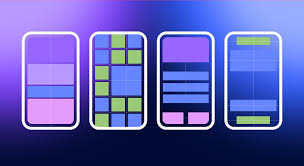The Art of Layouts in Graphic Design
Layouts play a crucial role in graphic design, serving as the foundation upon which visual elements are arranged to convey information effectively. A well-crafted layout can enhance the overall aesthetic appeal and readability of a design, making it a key aspect of the design process.
Understanding Layouts
A layout refers to the arrangement of text, images, and other design elements within a given space. It involves careful consideration of factors such as hierarchy, balance, alignment, and proximity to create a harmonious composition that guides the viewer’s eye through the content.
Types of Layouts
There are various types of layouts used in graphic design, each serving different purposes:
- Single-Column Layout: Ideal for simple designs with linear content flow.
- Multi-Column Layout: Allows for more complex content organization with columns of varying widths.
- Grid Layout: Utilizes a grid system to align elements consistently for a structured look.
- Modular Layout: Breaks content into modules that can be rearranged for flexibility.
- Zigzag Layout: Guides the viewer’s eye in a zigzag pattern for visual interest.
Tips for Creating Effective Layouts
To create compelling layouts, consider the following tips:
- Establish a Visual Hierarchy: Use size, colour, and spacing to prioritize information and guide the viewer’s attention.
- Maintain Consistency: Ensure alignment and spacing are consistent throughout the design for a cohesive look.
- Balance Elements: Distribute visual weight evenly to create equilibrium in the composition.
- Whitespace Matters: Embrace whitespace to give breathing room to elements and improve readability.
- Experiment with Symmetry and Asymmetry: Play with symmetrical and asymmetrical layouts to create visual interest.
The Impact of Layouts
A well-executed layout can captivate viewers, convey information clearly, and evoke emotions through visual storytelling. Whether designing websites, posters, magazines, or any other medium, mastering the art of layouts is essential for creating impactful graphic designs that resonate with audiences.
Understanding Layouts in Graphic Design: Key Questions and Insights
- What is a layout in graphic design?
- How important is layout in graphic design?
- What are the different types of layouts used in graphic design?
- How can I create an effective layout for my design?
- What role does visual hierarchy play in designing layouts?
What is a layout in graphic design?
In the realm of graphic design, a layout refers to the strategic arrangement of visual elements such as text, images, and graphics within a defined space. It serves as the blueprint for how these elements interact to convey information effectively and aesthetically. A well-crafted layout considers factors like hierarchy, balance, alignment, and proximity to guide the viewer’s eye through the content in a cohesive and engaging manner. Essentially, a layout in graphic design acts as a structured framework that not only organises but also enhances the overall impact and readability of a design piece.
How important is layout in graphic design?
The importance of layout in graphic design cannot be overstated. Layout serves as the backbone of a design, determining how visual elements are arranged to communicate information effectively and aesthetically. A well-thought-out layout not only enhances the overall look and feel of a design but also plays a crucial role in guiding the viewer’s eye through the content in a logical and engaging manner. It helps establish hierarchy, balance, and structure within a composition, ultimately influencing how the message is perceived and understood. In essence, layout is fundamental to successful graphic design, shaping the way information is presented and received by the audience.
What are the different types of layouts used in graphic design?
In the realm of graphic design, one frequently asked question revolves around the various types of layouts employed to structure visual content effectively. Designers utilise a range of layout techniques to organise elements such as text, images, and whitespace within a design space. Common types of layouts include single-column layouts for linear content flow, multi-column layouts for more complex organisation, grid layouts for consistent alignment, modular layouts for flexible arrangement, and zigzag layouts that guide the viewer’s eye in an engaging pattern. Each layout type serves a distinct purpose in enhancing visual hierarchy, balance, and overall composition in graphic design projects.
How can I create an effective layout for my design?
Creating an effective layout for your design involves careful consideration of various elements to ensure that the final composition is visually appealing and communicates your message clearly. Start by defining a clear hierarchy of information, using size, colour, and placement to guide the viewer’s eye through the design. Maintain consistency in alignment and spacing to create a cohesive look, and balance elements to distribute visual weight evenly. Embrace whitespace to give breathing room to key elements and improve readability. Experiment with both symmetrical and asymmetrical layouts to create visual interest and engage your audience. By following these principles and continuously refining your layout based on feedback, you can craft designs that are not only aesthetically pleasing but also effectively convey your intended message.
What role does visual hierarchy play in designing layouts?
Visual hierarchy plays a pivotal role in designing layouts by guiding the viewer’s eye through content in a structured and intuitive manner. By strategically manipulating elements such as size, colour, contrast, and spacing, designers can establish a clear hierarchy that highlights key information, establishes relationships between elements, and directs attention to important details. This deliberate arrangement not only enhances the visual appeal of the layout but also improves readability and comprehension, ensuring that viewers engage with the content in a meaningful way. In essence, visual hierarchy serves as a powerful tool that allows designers to control the flow of information and create visually compelling compositions that effectively communicate their intended message.
